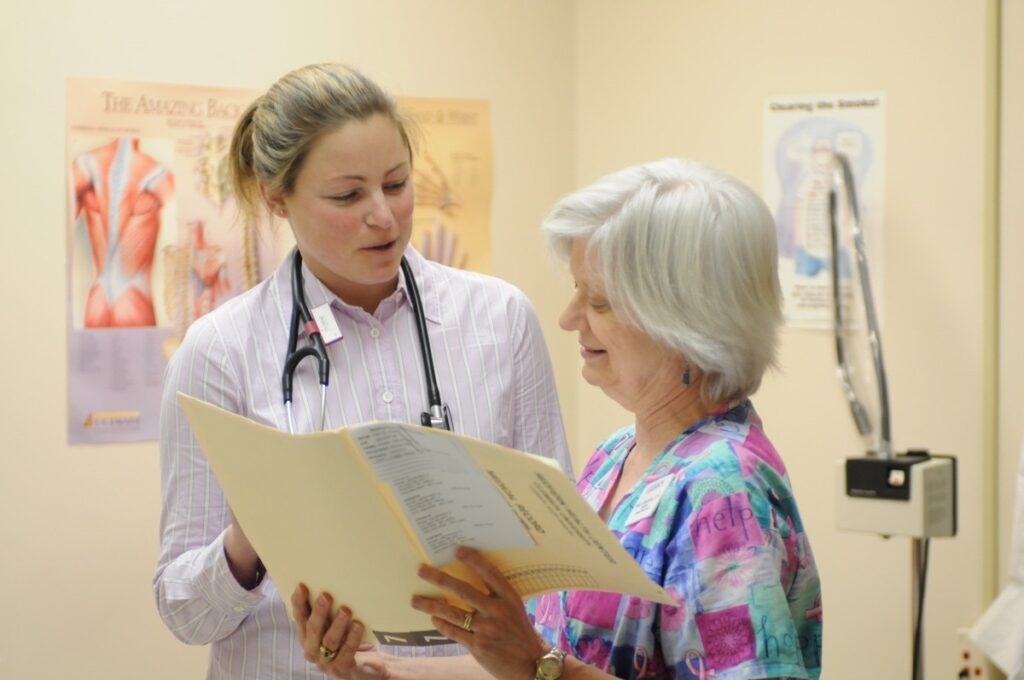
Elder abuse is a serious and often overlooked public health issue. Estimates of elder abuse vary, but systematic reviews and population studies consistently show that abuse and neglect are under-reported and affect a substantial number of older adults. Elder abuse is defined as intentional or negligent action(s) by a trusted adult or caregiver that induces harm to a vulnerable adult age 60 or older. Elder abuse occurs in the form of physical, sexual, psychological, or financial abuse or neglect. Older adults living with chronic illnesses, such as diabetes, face a heightened risk of experiencing abuse due to the unique challenges of their diagnosis. Older adults with diabetes may require continuous or advanced care from caregivers. Their dependence on caregivers, combined with other risk factors such as health complications, stress, family conflict, and inadequate preparation for caregiving responsibilities, increases older adults’ vulnerability to neglect, exploitation, and other forms of mistreatment. Understanding the connection between chronic health conditions and elder abuse is essential for caregivers, healthcare providers, and communities seeking to protect vulnerable populations.
How Diabetes Increases Vulnerability
Diabetes requires consistent management, including daily monitoring of blood sugar, medication adherence, specialized diets, and sometimes insulin and non-insulin injections. These demands can create dependency on caregivers for both medical and daily living support. When an older adult relies heavily on others for care, the risk of neglect or exploitation increases.
In addition, diabetes can contribute to complications, such as vision impairment, neuropathy, mobility issues, and cognitive decline. These health challenges may limit an older adult’s ability to recognize or report abuse.
Examples of elder abuse include:
- Financial exploitation may occur if a caregiver controls access to bank accounts, restricts access to disability or retirement benefits, and misuses funds for their own benefit at the expense of the older adult’s care.
- Neglect may arise when a caregiver fails to provide proper meals, help with personal hygiene, administer insulin, or seek medical care for an older adult’s injuries.
- Psychological abuse may occur when a caregiver uses fear, guilt, or threats to exert control, or abandons or isolates the older adult.
The Role of Caregiver Stress
Caring for someone with diabetes can be demanding, particularly if the older adult with diabetes has complications. Studies of caregivers for individuals with diabetes report elevated psychological distress and caregiver burden, which can erode the quality of care and increase the risk of neglect and abuse. A 2021 study reported an approximate 84% increase in elder abuse since the onset of the COVID-19 pandemic in the United States. Without adequate support, overwhelmed caregivers may resort to neglect or lash out in frustration.
Health Consequences of Abuse in Older Adults with Diabetes
Many studies have documented the vast range of negative impacts of elder abuse and neglect on victims’ health and well-being. Stress and trauma from abuse can worsen blood glucose management and digestive problems, prompt suicidal thoughts, and increase the risk of severe complications, including cardiovascular disease, infections, and premature death. Neglect that interrupts medication administration, glucose monitoring, or access to proper nutrition can rapidly worsen glucose management and provoke severe hyperglycemia (high blood glucose) or hypoglycemia (low blood glucose). Neglect of treatment can accelerate the progression of diabetes and lead to hospitalizations. Severe injuries, including head trauma, shattered bones, pain, and soreness, can result in long-term impairment and worsen pre-existing medical conditions. (See What Happens In The Body During Stress? for more information.)
Prevention and Support
Addressing the link between diabetes and elder abuse requires a coordinated effort between families and caregivers, community organizations, healthcare providers, and policymakers.
Families and Caregivers:
- Monitor warning signs, such as unexplained injuries, sudden weight loss, poor hygiene, or missed appointments, that may indicate abuse or neglect are occurring.
- Seek support resources early. Respite resources can provide caregivers with temporary relief to prevent burnout. Caregiver education through diabetes self-management education, wound care guidance, and meal planning reduces strain and improves care quality.
Community Organizations & Healthcare Providers
- Screen thoughtfully when risk is present. Because universal screening recommendations differ, healthcare providers are encouraged to use clinical judgment, evaluate warning signs, and follow local reporting pathways.
- Screen for caregiver burden. Brief assessments of caregiver strain can identify families who need respite or support.
- Coordinate social services. Involve case management, adult protective services, home health nursing, and community resources, such as meal delivery, to reduce dependence and social isolation.
Policymakers
- Policy and advocacy efforts can strengthen protections for vulnerable, older adults and improve access to affordable diabetes and senior care.
- Invest in community programs to provide caregiver support, education, and respite services to reduce stress. Programs that expand home health services, affordable diabetes supplies, caregiver respite, and social connection reduce the conditions that contribute to abuse.
Conclusion
The evidence indicates a two-way relationship between diabetes and elder abuse: diabetes increases vulnerability to abuse and neglect through caregiver dependence and complex medical needs, while abuse and neglect worsen metabolic health and diabetes outcomes. By recognizing the connection between risk factors for chronic disease and elder abuse, healthcare systems, caregivers, and communities can take proactive steps to prevent abuse and ensure that older adults with diabetes live with dignity, safety, and the best possible quality of life.
Healthcare providers should take a multidisciplinary approach that addresses the medical needs of the older adult with diabetes and the caregiver’s needs. Strengthening community resources and supporting caregivers are practical, research-backed strategies to reduce both mistreatment and diabetes complications.
To report suspected abuse, neglect, or exploitation of a vulnerable adult, call 1-888-CARE4US (1-888-227-3487).
If you or your loved one is in immediate danger or harm, please call your local law enforcement agency or 911.
Visit the SC Adult Protective Services website for more information.
References:
- Chang, E. S., & Levy, B. R. (2021). High Prevalence of Elder Abuse During the COVID-19 Pandemic: Risk and Resilience Factors. The American journal of geriatric psychiatry : official journal of the American Association for Geriatric Psychiatry, 29(11), 1152–1159. https://doi.org/10.1016/j.jagp.2021.01.007
- Centers for Disease Control & Prevention. (2024). About Abuse of Older Persons. Retrieved from https://www.cdc.gov/elder-abuse/about/index.html
- Centers for Disease Control & Prevention. (2024). Risk and Protective Factors. Retrieved from https://www.cdc.gov/elder-abuse/risk-factors/index.html
- Wong, R. T., Cafferky, B. M., & Alejandro, J. P. (2022). Chronic disease and elder mistreatment: A meta-analysis. International journal of geriatric psychiatry, 37(1), 10.1002/gps.5640. https://doi.org/10.1002/gps.5640
- Alias, A. N., Mokti, K., Ibrahim, M. Y., Saupin, S., & Madrim, M. F. (2023). Elderly Abuse and Neglect on Population Health: Literature Review and Interventions from Selected Countries. Korean journal of family medicine, 44(6), 311–318. https://doi.org/10.4082/kjfm.23.0046
- Nemati-Vakilabad, R., Khalili, Z., Ghanbari-Afra, L., & Mirzaei, A. (2023). The prevalence of elder abuse and risk factors: a cross-sectional study of community older adults. BMC geriatrics, 23(1), 616. https://doi.org/10.1186/s12877-023-04307-0
- Dong, X., & Simon, M. (2015). Association between Elder Abuse and Metabolic Syndromes: Findings from the Chicago Health and Aging Project. Gerontology, 61(5), 389–398. https://doi.org/10.1159/000368577
- U.S. Preventative Services Task Force. (2025). Intimate Partner Violence and Caregiver Abuse of Older or Vulnerable Adults: Screening. Retrieved from https://www.uspreventiveservicestaskforce.org/uspstf/recommendation/intimate-partner-violence-and-abuse-of-elderly-and-vulnerable-adults-screening
- Choi, J. Y., Lee, S. H., & Yu, S. (2024). Exploring Factors Influencing Caregiver Burden: A Systematic Review of Family Caregivers of Older Adults with Chronic Illness in Local Communities. Healthcare (Basel, Switzerland), 12(10), 1002. https://doi.org/10.3390/healthcare12101002
- Mimenza-Alvarado, A. J., Jiménez-Castillo, G. A., Yeverino-Castro, S. G., Barragán-Berlanga, A. J., Pérez-Zepeda, M. U., Ávila-Funes, J. A., & Aguilar-Navarro, S. G. (2020). Effect of poor glycemic control in cognitive performance in the elderly with type 2 diabetes mellitus: The Mexican Health and Aging Study. BMC geriatrics, 20(1), 424. https://doi.org/10.1186/s12877-020-01827-x
- Ghassab-Abdollahi, N., Ghorbani, Z., Kheirollahi, N., Nadrian, H., & Hashemiparast, M. (2024). Exploring the reasons for self-administration medication errors among illiterate and low-literate community-dwelling older adults with polypharmacy: a qualitative study. BMC geriatrics, 24(1), 1010. https://doi.org/10.1186/s12877-024-05595-w
Authors:
- Camilla Herndon, Rural Health and Nutrition, Greenville County
